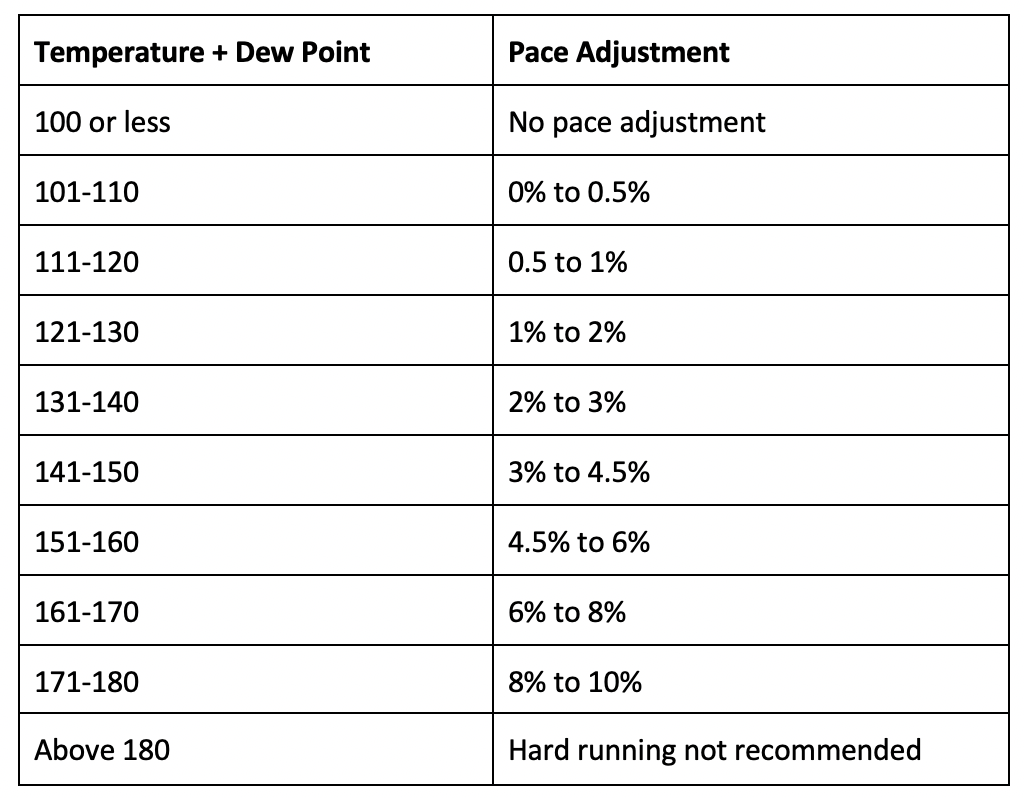Summer has arrived in Texas and it is getting sweaty out there. If you live in the kind of stifling heat and humidity like Houston or Austin has to offer, you know what I’m talking about when I say running can get pretty miserable in this weather. Most days, I feel like someone has wrapped me in Saran Wrap and I’m begging for a breeze, some dry air, and for the houses on my run route to have their sprinklers on full blast.
We all know hot and humid weather impacts how we feel, and you can probably guess that it impacts your pace. It’s not just you feeling tired, out of shape, dehydrated and worn down. It’s the heat and humidity. But what is the real physical impact? Runners like numbers. We like to know our pace, our weekly mileage, and our splits. Luckily, there are a few experts out there with some valuable tools to help you calculate your adjusted pace in hot and humid conditions so you can manage your effort (*it’s important to manage your effort! Don’t put yourself in a hole training in horrible conditions).
So, if you are starting to feel worn out by the repeated effects of working hard in warm conditions, this post is to remind you to be kind to yourself.
Coach Mark Hadley has some great information on his website here: www.maximumperformancerunning.com. If you add temperature and dew point at the time of your run, you can use the chart below to adjust your pace accordingly. Dew point is a better data point than relative humidity in determining warm weather pace adjustments and most weather apps have air temperature and dew point listed. The range exists due to lots of individual factors including stature, fitness and body composition of the runner. (* The AccuWeather and the Weather Channel app both list dew point or you can search for a dew point calculator.)
At 7am in Houston this morning, it was 81 degrees with a dew point of 77. If you went for a 6-mile easy run at 8-minute miles in this weather, the adjusted pace would be 4.5-6% faster (81+77 = 158; then use the chart above). At the lower end of the conversion, that gives an adjustment of about 22 seconds per mile, making the run equivalent to 7:38 pace in “normal” conditions.
These pace adjustments are recommended for continuous runs, for repeat track workouts of a mile or below, you can half the adjustment time because the body has a chance to cool between repeats.
Some other fun things about the heat and humidity:
● Runners are more likely to suffer from heat related issues in a 5km than they are when running a marathon. Tim Noakes, a medical doctor and physiology researcher in South Africa, has spent a lot of time researching heat training and found that heat stroke is actually more common in shorter races (e.g., 5-10km) than during longer efforts. In longer efforts the pace is naturally slower, allowing your body temperature to increase more gradually. This gradual increase gives your brain more time to recognize the danger and adjust effort accordingly.
● There is a mental component to training in the heat and humidity. For example, tricking yourself into thinking it is cooler can have real performance effects. Castle et al. (2012) showed that when they told participants the temperature was cooler than it actually was, athletes rated their perceived effort as lower and pushed harder. The deception made them cave less to the pain of the heat.
● It might provide beneficial physiological changes for endurance runners. This study showed that long term heat training (i.e., > 4 weeks) had a positive impact on hematological adaptations, showing that heat and humidity really might be the poor man’s altitude.
It’s not all bad! Train carefully, train slower, and stay positive. You got this.

